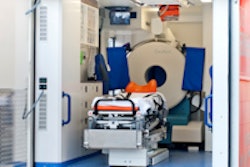The U.S. spends more on healthcare than 12 other industrialized countries, yet it does not provide "notably superior" care, according to a new report. The study also sheds some light on the higher utilization of medical imaging in the U.S. relative to other countries.
The report, titled "Explaining High Health Care Spending in the United States: An International Comparison of Supply, Utilization, Prices, and Quality," presents an analysis of prices and healthcare spending in 13 industrialized nations. The other nations examined were Canada, Denmark, France, Germany, the Netherlands, Norway, Sweden, Switzerland, the U.K., Japan, Australia, and New Zealand.
In 2009, U.S. healthcare spending amounted to more than 17% of gross domestic product (GDP), compared with 12% or less in the other countries. Japan's spending, which was the lowest, amounted to less than 9% of GDP.
The U.S. spent nearly $8,000 per person in 2009 on healthcare services, while Japan and New Zealand spent approximately $2,600 per person, and Norway and Sweden spent approximately $5,300.
Higher prices, more readily accessible technology, and increasing obesity of the U.S. population appear to be the main factors driving the high rates of U.S. spending, rather than greater use of hospital and physician services, according to the report's author, David Squires, senior research associate of international health policy at the Commonwealth Fund.
The report drew on data from the Organization for Economic Cooperation and Development (OCED) that suggested the U.S. had an above-average number of CT scanners per capita (34.3 per million population), MRI systems (25.9 per million), PET scanners (3.1 per million), and mammography systems (40.2 per million) in 2009.
Use of expensive diagnostic imaging procedures was also highest in the U.S., with 227.9 CT exams performed per 1,000 population. By comparison, for the six countries where comparable data were available, the second and third ranked countries utilizing CT scans were France (at 138.7 per 1,000 population) and Denmark (at 125.4 per 1,000 population).
With respect to MRI, the U.S. also claimed top honors, at 91.2 MRI exams per 1,000 population. The country with the second highest utilization rate was France, at 55.2 exams per 1,000 population.
No. of imaging scanners per 1 million population in 2009
|
||||||||||||||||||||||||||||||||||||||||||||||||||||||||||||
| Data were unavailable for Germany. |
Regarding exam pricing, the report cited data from the International Federation of Health Plans, an organization of health insurance companies from more than 30 countries that tracks healthcare prices worldwide. Data from 2011 indicated that the average diagnostic imaging fee charged in the U.S. was $510 for a CT exam and $1,080 for an MRI exam.
Squires wrote that the high cost of healthcare in the U.S. does not seem to be explained by a greater supply or utilization of healthcare services. The U.S. had the fewest physician consultations, at 3.9 per capita, of any country except Sweden, as well as low levels of hospital utilization. Hospitalization costs adjusted for cost of living, however, were cited as being the highest in the U.S., at a median of $18,000 in 2009. Germany, by contrast, had the lowest at $5,072.
In spite of its cost, the quality of healthcare in the U.S. is variable and not necessarily of high quality. Using cancer as an example, the U.S. had the highest survival rates among the 13 countries for breast cancer, and it was tied with Norway for colorectal cancer survival. However, cervical cancer survival rates in the U.S. were worse than average, at 64% compared to 66%, Squires noted. (The country with the lowest survival rates for these three cancers was the U.K.)
Lack of universal healthcare has created an environment of negotiated and varying prices in the U.S., according to the report. If the U.S. were to spend the same share of its GDP on healthcare as the Netherlands, the country spending the next largest share of its GDP, at 12%, the savings to the U.S. economy would have been $750 billion in 2009.
Japan, with spending at 8.5% of GDP, keeps healthcare costs within a budget allotted by its government by setting healthcare prices, Squires noted. Japan's government has established a fee-for-service system, while offering unrestricted access to specialists and hospitals. Japan operates the most CT scanners (97.3 per million population) and MRI systems (43.1 per million population) of any of the 13 countries; however, exam utilization statistics per 1,000 population were not available for this country.
The report can be read in its entirety by clicking here.



















